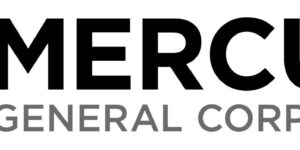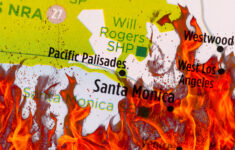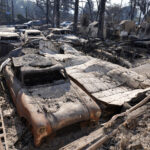Just in time for the 2013 hurricane season, Karen Clark & Co. (KCC), a catastrophe risk and modeling firm, has released a scientific tool for creating hurricane tracks and wind speeds. Named WindfieldBuilder, the tool enables property/casualty insurance companies to create realistic windfields for storms of their own creation as well as for actual storms in real time.
The tool can be licensed as part of KCC’s RiskInsight technology platform. The company said it is already installed with top 10 property/casualty insurers and global reinsurers.
Karen Clark, president and CEO, KCC, said WindfieldBuilder allows firms to tailor damage functions to their unique books of business.
WindfieldBuilder provides two options, Build a Track and Import a Track, for creating hurricane windfields and estimating hurricane losses. Build a Track lets users enter several important storm parameters, such as peak wind speeds and radius of maximum winds, and to build the storm track interactively. Users can select other storm features such as slow, medium, or fast filling—indicating the rate at which the hurricane winds dissipate over land.
“All storms lose energy as they travel over land, but the rate at which that occurs varies widely from storm to storm,” said Glen Daraskevich, senior vice president, KCC. “For example, Hurricane Ike was an outlier in how slowly it dissipated after landfall. WindfieldBuilder shows how historical hurricanes have weakened over land and enables companies to directly test how different filling rates impact their portfolio losses.”
Import a Track enables users to read in National Hurricane Center storm tracks and tracks they create. This provides flexibility for varying storm parameters along the path. Once a track is imported into RiskInsight, losses can be estimated for individual policies as well as for portfolios of policies. Wind footprints can also be superimposed on locations and TIVs to calculate exposure aggregations for different wind speed bands.
The storm footprints created through WindfieldBuilder are fully visible to the user. Users can see the impacts on the storm footprints of changing filling rates, peak wind speeds, and other sensitive variables such as radius of maximum winds, according to KCC.
“The transparency of WindfieldBuilder allows for proper external peer review and puts companies at a competitive advantage relative to peers using only the traditional vendor models,” continued Clark. “Rather than relying heavily on event catalogs that may not be credible and that can change significantly from update to update, industry leaders are now using WindfieldBuilder to more effectively leverage their own internal expertise and outside experts of their choosing.”




















 Leading Insurance Innovation in the AI Age (Part 1: Culture)
Leading Insurance Innovation in the AI Age (Part 1: Culture)  Leading Insurance Innovation in the AI Age (Part 2: Tech Project Pitfalls)
Leading Insurance Innovation in the AI Age (Part 2: Tech Project Pitfalls)  Mercury General Gives Reinsurance Update: One or Two Events Still TBD
Mercury General Gives Reinsurance Update: One or Two Events Still TBD  Are Cars ‘Structures’? Tallying the Damage from the Los Angeles Wildfires
Are Cars ‘Structures’? Tallying the Damage from the Los Angeles Wildfires 




